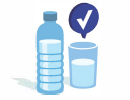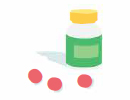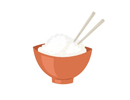Home > Center
Center
Metabolic & Bariatric Surgery Consultation Guide
-
Criteria for Metabolic & Bariatric Surgery
- Bariatric Surgery (Patient’s Share: 20%)
- Indications
- BMI ≥ 35.0kg/m² or BMI ≥ 30.0kg/m² with comorbidities
• Revisional surgery due to complications or excessive weight loss after bariatric surgery
• Corrective surgery for complications after bariatric surgery
• Corrective surgery if indications persist after 18 months of active management
Comorbidities
Type 2 diabetes, hypertension, hypoventilation, sleep apnea, joint disease, non-alcoholic fatty liver disease, asthma, hyperlipidemia, GERD, cardiomyopathy, coronary artery disease, polycystic ovary syndrome, pseudotumor cerebri
- Metabolic Surgery [Diabetes Surgery]
- Proven to be more effective than conventional treatments for diabetes remission- Indications
- BMI ≥ 27.5kg/m² with uncontrolled Type 2 diabetes
- Bariatric Surgery (Patient’s Share: 20%)
-
Initial Consultation
- Blood tests may be conducted if necessary (Fasting not required)
- Additional specialist consultation may be required based on comorbidities and degree of obesity
- Required Documents
- Referral or doctor’s note for comorbid conditions
- Health check-up or blood test results within the past 6 months
- List of current medications or prescription
- For medical benefit recipients: Referral from primary medical institution
-
Preoperative Tests
- Tests scheduled 3-4 weeks before surgery

Test Items
· Blood test
· Chest X-ray
· Electrocardiogram
· Pulmonary function test, for BMI ≥ 40 or asthma
· Abdominal CT scan with contrast or ultrasound
· Body composition analysis
· Bone density test
· BMI ≥ 35: Non-sedated endoscopy
· Continuous glucose monitoring for diabetes patients
- Preoperative Test Preparation:

Fasting including water from midnight on the day of examination
Medication Instructions
* Hypertension/thyroid medications: Take with a small amount of water
* Diabetes medications (Metformin): Stop 48 hours before the test

BMI ≥ 35: Our hospital does not offer endoscopy under sedation for patients with a BMI of 35 and higher. Other options may be discussed during your consultation.
- Tests scheduled 3-4 weeks before surgery
-
Nutrition Education
- ✔ Pre- and post-operative nutritional education (Additional sessions as needed)
- ✔ Education Schedule
-
1st 2nd Nutrition Education 3rd Nutrition Education 4th Nutrition Education 5th Nutrition Education Preoperative Nutrition Education Post-op Day 1-2 1 Month After Surgery 3 Months After Surgery 6 Months After Surgery
-
Hospitalization Guide
- ✔ Hospital Stay: 5 days (4 nights), extendable if needed
- ✔ Admission usually one day before surgery
-

Items to Bring
Current medications
Toiletries, slippers, wet tissues, towel
CPAP machine, if applicable
- ✔ Preoperative Preparation

- Diabetes medications: Stop one day before surgery

Smoking cessation 4 weeks before surgery

Remove nail polish, piercings, and jewelry
-
Types of Bariatric & Metabolic Surgery
-
Pre-operative stomach Sleeve Gastrectomy Roux-en-Y Gastric Bypass Sleeve gastrectomy with Intestinal Bypass Gastric Balloon Insertion 




-
-
Postoperative Outpatient Follow-Up
-
1 Week Post-op Follow-up + Nutrition Education / Suture removal 2-3 Months Post-op Blood test + Consultation + Nutrition Education 6 Months Post-op Blood test + Consultation 1 Year Post-op & Annually Blood test, Endoscopy, Abdominal CT
-
-
Postoperative Nutritional Management
- 1) Nutritional Management After Bariatric and Metabolic Surgery: Goals
1. To provide adequate calories and nutrients necessary for wound healing and muscle preservation
during rapid weight loss after surgery.
2. To minimize diet-related discomforts such as dumping syndrome, dehydration, nausea,
reflux, indigestion, and diarrhea resulting from changes in gastrointestinal structure and function. - 2) Basic Dietary Principles After Surgery
① Stay well-hydrated daily. (Target: 1.5L or more per day)
* Drink water in small, frequent sips.
* Avoid drinking during meals and within 30 minutes before or after eating.
* Avoid using a straw.② Limit high-calorie foods, sugary drinks, and sweet snacks.
* These can trigger 'dumping syndrome' and slow down weight loss.③ Diligently take prescribed medications, vitamins, and mineral supplements as directed by your doctor.
④ Eat slowly. Swallowing without proper chewing can lead to indigestion.
⑤ Initially, consume 50-100ml or less per meal.
Signs of overeating (consuming more than the appropriate amount)
include: a) Pain in the pit of your stomach b) Nausea c) Pain in the shoulder or upper chest
* If these symptoms persist or worsen, contact your doctor.⑥ To maximize protein intake, eat protein first during meals.
* As your stomach gradually stretches over time, aim for three meals a day with 1-2 protein shakes.⑦ Advance your diet gradually based on your adaptation.
Step 1 Liquid Diet ➔ Step 2 High-Protein Liquid Diet ➔ Step 3 High-Protein Soft Diet ➔
Step 4 High-Protein Solid Diet ➔ Step 5 Regular Diet




Adequate hydration
(At least 1.5L per day)Avoid high-calorie and sugary foods Eat slowly & prioritize protein intake Gradual diet progression
(Liquid → Soft → Regular diet)
- 1) Nutritional Management After Bariatric and Metabolic Surgery: Goals




